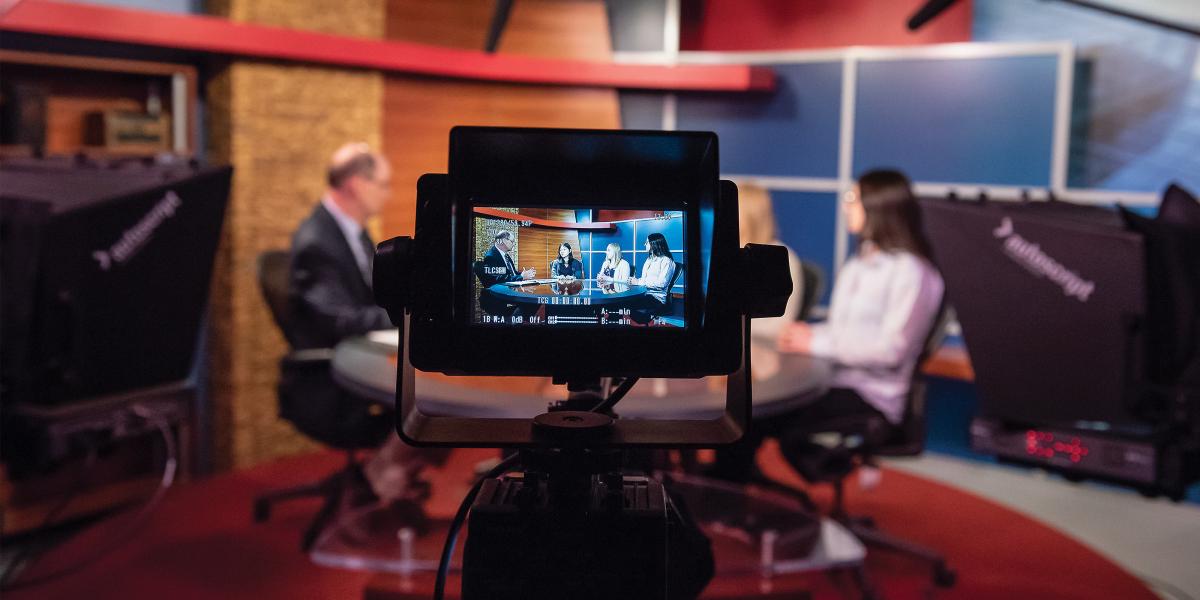Media Training for Public Health Professionals
Learning to deliver key public health information on the spot and on message.
The cameras are rolling. The TV host asks a city health department official to explain a report showing high lead levels in the water at a local elementary school.
A few silent seconds tick by as the health official searches for words that don’t come. The host moves on to another panelist.
Fortunately, this exchange took place not at a TV station but in the School’s multimedia studio. Health Policy and Management Professor Thomas Burke, PhD, MPH, played the host of the fictitious show Public Health News. The health official was a DrPH student taking a Summer Institute course called Making Effective Public Presentations.
The on-camera exercise was just one activity designed to give students confidence in participating in media interviews, providing government testimony and engaging in social media—all exchanges that require communicating scientific or complex ideas to a lay audience. “It’s a core competency of public health, and it’s a skill that needs practice,” says course instructor Patti Truant Anderson, PhD ’14, MPH ’09, an associate in Health Policy and Management.
One critical media skill that students practiced was the pivot, a tactic to stay on message: “We basically learned to take any question that a reporter asks and make it about a topic you want to talk about,” says DrPH student Jirair Ratevosian, MPH. And preparation, he stresses, is key.
“When you’re on the spot, when you’re in the TV studio or on the phone with a reporter, it makes a world of difference,” he says.
For their final assignment, students evaluated their studio performance. Ratevosian noticed that he tends to speak too fast. “Watching myself on TV was just an invaluable experience,” he says. “It’s one thing to listen to a lecture. It’s another thing to practice in real time, live, and then come back and watch yourself and dissect it.”
